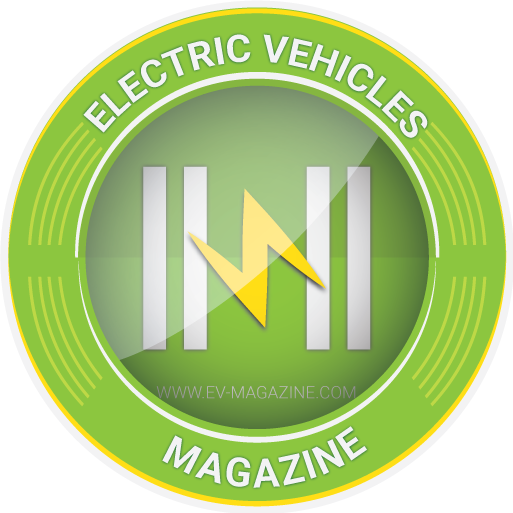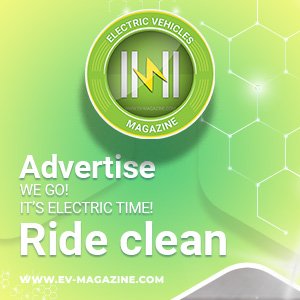Early use cases for battery-electric commercial vehicles include medium-duty box trucks for local delivery. (Navistar)
[Stay on top of transportation news: Get TTNews in your inbox.]
Challenges remain for fleets wishing to integrate battery-electric trucks into their operations, but some early adopters are successfully deploying these plug-in vehicles in a range of applications that are well suited to the technology.
While Class 8 electric trucks tend to attract the spotlight, many of the early business cases for fleet electrification are in the light- and medium-duty space, including box trucks, utility trucks and local delivery vehicles.
U.S. Air Conditioning Distributors, a private fleet operator based in City of Industry, Calif., has been running two medium-duty battery-electric International eMV Series trucks in its 28-vehicle fleet since March 2023 and has received a grant to purchase five more electric trucks.
Electricity to power the plug-in trucks costs about a fourth as much as diesel, said Jack Scarsi, vice president of operations and finance at the HVAC distributor.
RELATED: Five key considerations
UA Air Conditioning Distributors has been running two medium-duty battery-electric International eMV Series trucks since March 2023. (US Air Conditioning Distributors)
US Air Conditioning Distributors was able to install a Level 3 DC (direct current) fast charging station and the company is working with Southern California Edison’s Charge Ready program to install two more.
“The biggest thing is to make sure that you have your infrastructure plan in place for the day that those trucks show up,” Scarsi said.
Another key to success is educating drivers, he added. They must be aware of how much charge is remaining, and they must shift their habits to take advantage of regenerative braking. The truck automatically slows when the foot comes off the accelerator, producing stored electric power and lengthening the life of the brake pads.
Scarsi said the trucks are a nice fit for the company. They offer more acceleration, have no gears and reduce vibration so drivers love them. The trucks have a range of 185-210 miles and the company uses them mostly for local deliveries.
Customers are often impressed
“For us being in the HVAC world pushing high-efficiency air conditioning equipment, for our customers to see us taking the initiative to do the same thing with our delivery trucks, it’s good publicity for our company,” he said.
Fleets should gain experience operating at least a small number of electric trucks before regulations force them to do so, said Debbie Shust, vice president of Navistar’s work truck business.
Shust, whose company produces the International eMV Series, noted there were only 300 truck registrations in the Classes 6-7 space among all manufacturers last year. The electric trucks cost 2½ to three times as much as diesels, not including the charging infrastructure, although government grants can partially offset the costs.
“There’s lots of energy, but things are slow moving,” Shust said. “I’ll say two years ago people were excited. Products were coming out. But everybody thought they were just going to drop an electric vehicle into their daily routine and not have to modify their behavior.”
More recently, however, fleets interested in deploying these vehicles have come to the realization that they will need to consider how to run their businesses differently to integrate electric vehicles into their operations, she said.
Navistar, a subsidiary of global truck maker Traton Group, aims to have 50% of its total sales be zero-emission vehicles by 2030. Shust said achieving that goal depends on the development of the country’s charging infrastructure.
Despite the challenges, Shust said Navistar is encouraging fleets to begin deploying electric vehicles in their fleets so they can see how they will mesh with their unique operations. They should do this before regulations from the California Air Resources Board and U.S. Environmental Protection Agency don’t give them a choice.
Electric truck adoption has progressed in applications such as utility fleets that are well suited to the technology. (Navistar)
“Many customers have no idea what’s coming at them from a regulatory standpoint, and if they wait until the last minute when regulations force them to enter the EV space, they are not going to be prepared and they’re not going to have thought through all of the potential hurdles in their ,” Shust said. “So we’ve been saying, get started now. Even if you have a fleet of 100 trucks, get one. Get it introduced so that you can figure out the things that you don’t know that you need to start thinking about.”
For Navistar, planning is the key to success, Shust said. Navistar’s zero-emissions team can help customers understand trade-offs and hurdles. The charging infrastructure and truck need to come together for the fleet at the right time. A customer adding a single truck can probably get away with a Level 2 charger that can charge a medium-duty in eight or nine hours. A fleet with more electric vehicles might need a DC fast charger that can do it in 90 minutes.
Pace of Adoption
Mike Roeth, executive director at the North American Council for Freight Efficiency, often hears from fleet operators that are still waiting to adopt the technology.
But with more shippers asking about sustainability and more regulations coming, those who wait will be standing in line, he said.
“There’s just a lot of blocking and tackling here,” Roeth said. “You’ve got to get that relationship built with the utilities. You’ve got to work with construction companies. There’s a lot of learning and just things that every single fleet is going to have to figure out on their own. The industry will mature. This will all get easier.”
Some fleets, including UPS, are moving ahead.
The parcel giant first deployed electric vehicles in 1934 and remains committed to the technology as part of its “rolling laboratory” of more than 18,000 advanced technology and alternatively fueled vehicles, said Ryan Bankerd, corporate director of sustainability.
The company has set a goal of deploying 40% alternative fuel vehicles in its ground operations by 2025.
Electrifying UPS’ brown Class 6 delivery trucks at scale has been challenging due to the limited number of vehicle manufacturers, especially when compared with lighter vehicle classifications. However, the company has worked with manufacturers to integrate electric vehicles into various operations globally, Bankerd said.
He emphasized having strong partnerships with vehicle manufacturers, utility companies, and state and local governments. Another necessity, Bankerd said, is “capital resiliency.” Smaller fleets with tight margins must be prepared for unexpected costs.
UPS Inc. ranks No. 1 on the Transport Topics Top 100 list of the largest for-hire carriers in North America.
Truck leasing and logistics provider Penske has been actively testing electric vehicles for five years, said Paul Rosa, the company’s senior vice president of procurement and fleet planning.
Truck leasing and logistics provider Penske has been actively testing battery-electric trucks for the past five years. (Penske)
The technology is advancing not only through generations but iterations, he said, citing small changes such as improving high-voltage cabling routes.
Rosa said the industry can’t yet compare total cost of ownership for electric trucks versus diesels because they haven’t gone through an entire life cycle. It’s not yet known how durable the vehicles will be or what additional expenses might arise.
Penske Logistics ranks No. 15 on the for-hire TT100.
Ryder System, meanwhile, has about 100 electric vehicles but is just now getting into the medium-duty space with a couple of rental vehicles and a couple on order for lease, said Angie Hargesheimer, group director of accounts for advanced vehicle technology.
The company is applying what it has learned in lighter duty vehicles to medium duties.
To retread or not to retread, that is the question. For some maintenance managers, the debate between purchasing new tires or retreads is constant. In this episode, host Michael Freeze finds answers about tires with Alex Aguilar, senior training specialist at Bridgestone Americas. Tune in above or by going to RoadSigns.ttnews.com.
Hargesheimer said fleets are still trying to make medium-duty electric vehicles work operationally and financially, but if medium duties are still in second gear, light duties may be in third gear.
“Short routes that really fit the EV van, light-duty model — I would do that all day long,” Hargesheimer said. “You add in the savings between electricity and fuel, you can get really, really close to being cost neutral with the van.”
For medium- and heavy-duty electric trucks, however, there are still cost challenges, she said.
“The investment itself is still significantly higher than the diesel counterpart, and then you have to add on the charging infrastructure,” Hargesheimer said. “That’s not an insignificant number.”
Ryder’s Supply Chain Solutions business unit ranks No. 9 on the for-hire TT100.
Use Cases for Electric Trucks
NACFE’s Roeth said overall industry adoption has been progressing in box trucks and utility trucks. Box trucks are straightforward and easier to electrify. They return to base at the end of the day and can charge overnight. Utility companies sell electricity and have an interest in using electric trucks.
Roeth said these types of fleet operators often drive a truck 20, 50 or 60 miles a day, far below an electric truck’s range. One day a month that same truck might travel 300 to 400 miles, which is too far for an electric truck. Fleets will need to keep diesels on hand for those occasional trips.
Adoption is lagging in some vocational truck applications. Penske’s Rosa said those are a challenge because of power take-off requirements such as booms on lumber trucks. Some fleets have used portable power that can charge the battery.
Drivers often give battery-electric trucks high marks for providing a quiet and comfortable ride. (Navistar)
Ari Kahn, manager of carbon-free transportation at the clean energy nonprofit RMI, sees adoption occurring in the last-mile segment, where the economics and charging requirements are more favorable than in other use cases.
“You may need a grid upgrade,” Kahn said. “If you want to compare it to going to the dentist, that grid upgrade is more like getting a tooth cleaning versus maybe getting crowns and a root canal, which is what you would be looking at if you were trying to charge a depot of tractor-trailers, which could potentially be akin to [the energy consumption of] a high-rise, maybe even a sports stadium. That’s just not the case with the medium duties.”
Penske’s Rosa said fleets will continue to adopt the technology at a slower pace than some had hoped for, but he believes battery technology will make a “big leap forward” in the next five years.
“It’s really about the battery, and it’s about the infrastructure availability,” he said. “Battery’s big, it’s heavy, it costs a lot and it’s got limited range. When that changes, this thing takes off.”
Despite the challenges, Navistar is moving ahead with battery-electric vehicle technology.
“We know this is the future,” Shust said. “So we’re going to continue to pursue electric vehicles, and we think it’s the right thing for the industry. We will get to [total cost of ownership] parity. The cost of batteries is going to come down, just like your computer. … It’ll make good business sense to move to an electric vehicle, and then I don’t have to worry about regulations. Once the math works for the end customer, it’s easy.”
Want more news? Listen to today’s daily briefing below or go here for more info:
Source link
#Plugging #BatteryElectric #Vehicle #Market








